The Wagah-Attari border ceremony — a daily, rather ridiculous ritual, marking the closing of the Pakistan-India border — serves as a backdrop for Syed Faraz Ali’s recent show ‘The Middle Ground’, held at the Sanat Initiative in Karachi. It is an exploration of nationalistic fervour and performative spectacle, where Pakistan Rangers and Indian Border Security Force engage in a seemingly aggressive yet symbolic parade.
Despite the historical tensions between the two nuclear nations, the ceremony transcends confrontation, evolving into a display that has captivated hundreds of thousands of people on both sides for over six decades. Just over a year ago, I went to Wagah to see what all the fuss was about and, having witnessed that act of pure theatre — as no amount of images and videos of the daily show prepares one for the actual drama — Ali’s representation of it through ‘The Middle Ground’ is all the more enjoyable.
The Wagah Border, often dubbed the ‘Berlin Wall of Asia’, serves as the backdrop for this well-orchestrated ceremony, and the artist has captured this pantomime in the several art pieces of his solo show.
Ali is a distinguished artist hailing from Karachi, and he channels his perpetual quest for truth and societal reflection into thought-provoking bodies of work. Graduating from the Indus Valley School of Arts and Architecture (IVS), he further honed his craft at the National Art School in Sydney, Australia.
The theatrics of the Wagah-Attari border ceremony take centre stage in Syed Faraz Ali’s latest body of work
Through precise brushstrokes and meticulous attention to detail, Ali portrays the synchronised movements of troops, their towering presence accentuated by fan-shaped turbans catching the evening light. The tension is palpable, as guards from both nations march towards the dividing line, their salutes resembling attempted blows, only to veer off in a choreographed salute at the lowering of the national flags. The closing of immense metal gates with a resounding clang may prove to be an emotional moment for families divided at the time of Partition in 1947.

Ali’s artistic practice transcends mere observation, delving into the intricacies of this ceremonious display. His exploration of repetitive screen printing techniques on cork sheets amplifies the narrative, translating the rhythmic movements of soldiers into a symphony of patterns and symbols.
The resulting composition mirrors the harmony amidst apparent tension, illustrating the unity forged through coordinated performance. The artist feels that, as a sustainable material, cork has a lot of capacity as a medium for exploration.
Through his imagery, Ali navigates the complexities of geopolitics and societal dynamics, inviting viewers to engage with pressing issues and envision a path towards collective understanding and reconciliation.
There are a few interesting juxtapositions of Manga characters in aggressive postures, whereby the cartoon characters are set side by side with the Wagah border guards. The artist told me that the idea revolved around his childhood memories of the game Street Fighter.
The longest-running show in town, the Wagah nationalistic passion and ceremony shows no signs of letting up just yet. Through the language of political pop art, Ali navigates this contemporary landscape, offering a poignant commentary on the complexities of our time.
‘The Middle Ground’ was on display at the Sanat Initiative in Karachi from March 5-14, 2024
Rumana Husain is a writer, artist and educator. She is the author of two coffee-table books on
Karachi, and has authored and illustrated 75 children’s books
Published in Dawn, EOS, March 24th, 2024
















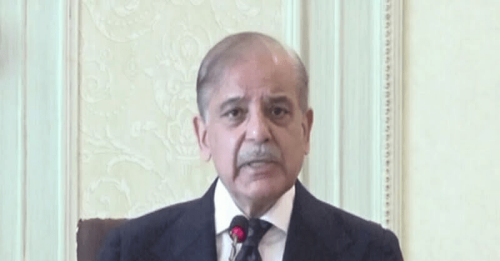

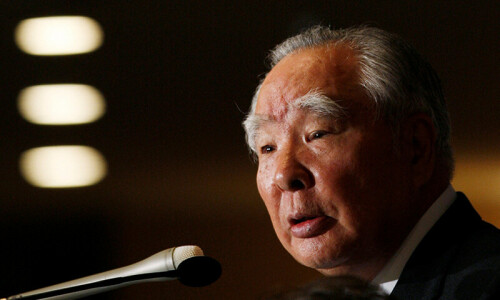
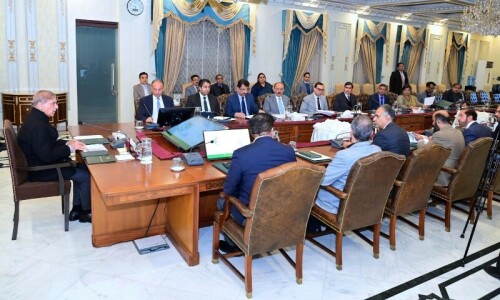
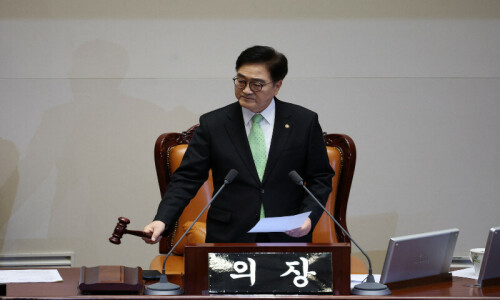
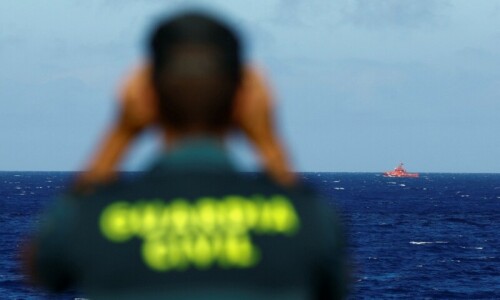


























Dear visitor, the comments section is undergoing an overhaul and will return soon.